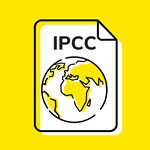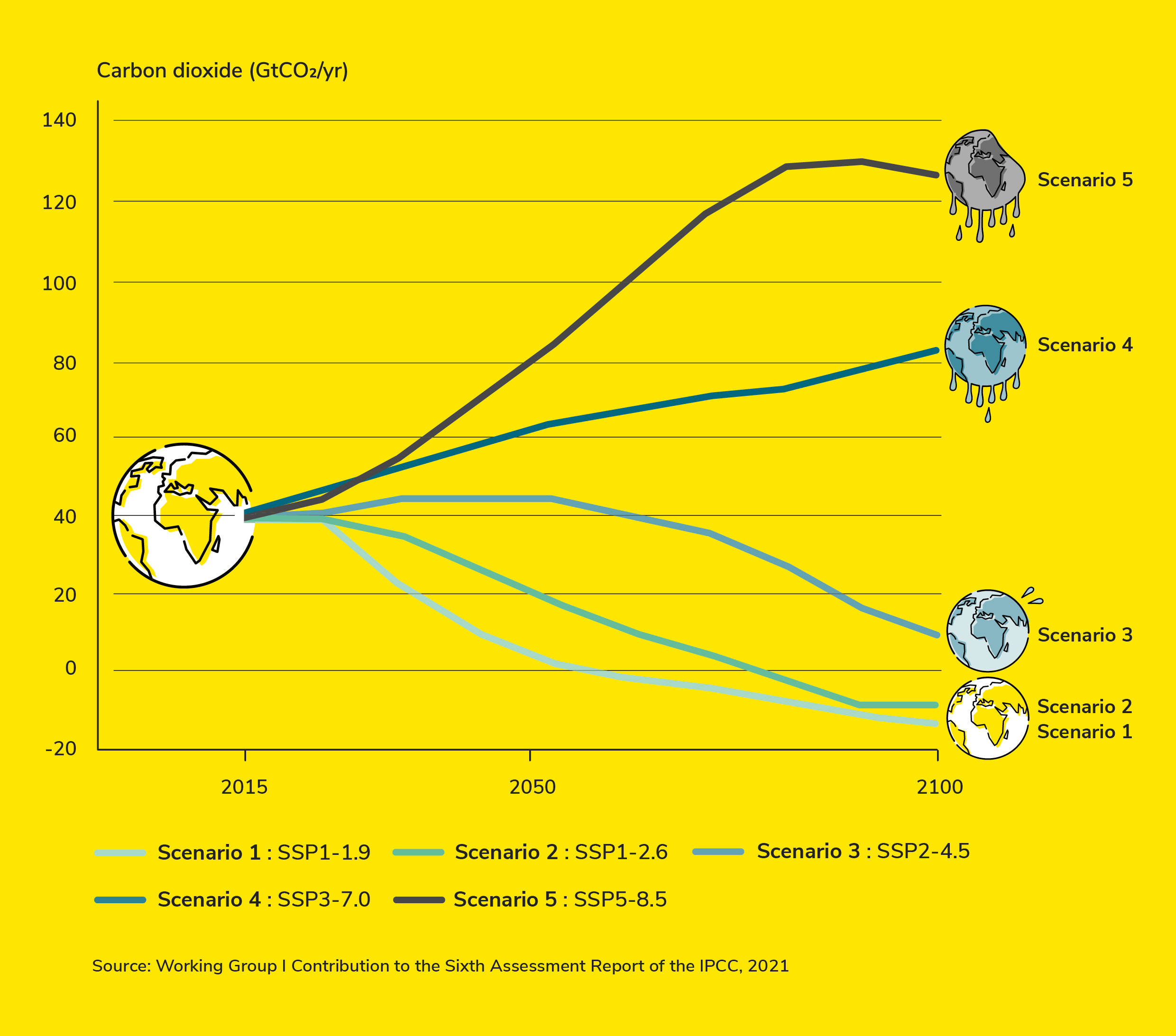
Latest IPCC climate report
What is the IPCC?
 The IPCC or Intergovernmental Panel on Climate Change is a body created in 1988 by two UN institutions: the World Meteorological Organization and the United Nations Environment Programme. It regularly issues reports summarizing scientific assessments of climate change. The expert members of the panel establish forecasts and propose strategies aimed at mitigating greenhouse gas emissions.
The IPCC or Intergovernmental Panel on Climate Change is a body created in 1988 by two UN institutions: the World Meteorological Organization and the United Nations Environment Programme. It regularly issues reports summarizing scientific assessments of climate change. The expert members of the panel establish forecasts and propose strategies aimed at mitigating greenhouse gas emissions.
The IPCC has 195 member states, representing almost all the countries of the world. It is composed of three separate working groups:
- Working Group I studies the scientific aspects of the climate system and of climate change.
- Working Group II deals with the consequences of climate change, and the adaptation and vulnerability of socio-economic and natural systems.
- Working Group III assesses options for limiting greenhouse gas emissions.
What does the latest IPCC report say?
The members of the IPCC are categorical. They are observing changes that have not occurred for hundreds of thousands of years. The August 9, 2021 report, entitled "Climate Change 2021: The Physical Science Basis",
was approved by 195 governments. Its publication, in three separate volumes, will be completed in 2022. Here's what to take away from the first volume.
- Man's responsibility for global warming is unequivocal.
- In
all the scenarios considered, warming exceeds the 1.5°C mark in the next twenty years.
- These five scenarios are more precise than the previous ones.
- Their aim is not to "predict the future" but to take account of the uncertainties
linked to future human activities and thus to allow States to decide on their policies with full knowledge of the facts.
GHGs: 5 conceivable futures for 2100?
Five scenarios encompass a broad spectrum of possible futures for GHG emissions:
Assumptions range from a scenario in which global CO2 emissions decline dramatically, with a goal of carbon neutrality in 2050, and then are negative in
the second half of the century, to a scenario in which CO2 emissions continue to increase sharply, up to twice as much in 2050 and even more than three times as much in 2100.
The five IPCC scenarios

Shared Socioeconomic Pathways (SSP)
Developed by the scientific community, the pathways have served to build a common framework for thinking about climate issues and to model five "narratives" that take into account possible social, economic, political and technological changes between
now and 2100.
These five narratives have been used to develop different scenarios for the evolution of economic, energy and land use systems.
The 5 scenarios in details
SSP1-1.9 : Very ambitious scenario to comply with the 1.5°C objective of the Paris Agreement.
This is the most optimistic scenario. Global CO2 emissions fall to zero by 2050. Societies adopt more environmentally friendly practices, with the focus shifting from economic growth to general well-being. Investments in education and health
increase and inequality decreases. Severe weather events are more frequent, but the world has avoided the worst consequences of climate change.
Challenges for adaptation: low
Challenges for mitigation: low
• SSP1-2.6: Sustainable development scenario
Global CO2 emissions are strongly reduced but less rapidly. The objective of zero emissions is reached after 2050. This scenario presents the same socio-economic trends towards sustainable development as in the first scenario, but the temperature
increase stabilizes at around 1.8°C by the end of the century.
Challenges for adaptation: moderate
Challenges for mitigation: moderate
• SSP2-4.5: Middle of the road scenario
CO2 emissions hover around current levels before beginning to decline by mid-century. Socio-economic factors follow their historical trends, with no significant change. Progress toward sustainability is slow, with disparate development and
income growth. Under this scenario, temperatures rise by 2.7°C by the end of the century.
Challenges for adaptation: high
Challenges for mitigation: high
• SSP3-7.0: Regional rivalry scenario
Greenhouse gas emissions and temperatures keep regularly increasing, with CO2 emissions almost doubling from current levels by 2100. Countries become more competitive with each other, prioritizing issues of national and food security. By the
end of the century, average temperatures have risen by 3.6°C.
Challenges for adaptation: high
Challenges for mitigation: low
• SSP5-8.5: Fossil fuel-driven development scenario
This is the "worst case scenario". Current levels of CO2 emissions are almost doubled by 2050. The world economy grows rapidly, but this growth is driven by fossil fuel exploitation and very energy-intensive lifestyles. By 2100, the average
temperature of the planet will have risen by a catastrophic 4.4°C.
Challenges for adaptation: low
Challenges for mitigation: high
Adaptation and mitigation, a key twofold challenge for combating climate change
Adaptation refers to the process of adjusting to the current or future climate and its consequences:
- reducing the adverse effects of climate change
- exploiting the beneficial effects
Mitigation is the implementation of measures to reduce the extent of human-induced global warming through the reduction of greenhouse gas emissions or the capture and sequestration of carbon dioxide from the atmosphere.
What will happen in concrete terms if planetary warming exceeds 1.5°C?

- There will be more heat waves.
- Warm seasons will get longer and cold seasons shorter.
- With a temperature increase of +2°C, the heat might reach extreme temperatures in some places.
- The water cycle will be altered as a result:
- Rain and drought will be more intense.
- There will be more floods.
- The rise in sea level will probably obliterate some coastal regions.
- We will be witness to phenomena such as permafrost thawing and the melting of snowpack, glaciers, and ice caps.
- In the oceans, we will observe heat waves and seawater acidification.
Climate: taking action now, but how?

By contrast, the report indicates that significant reductions, maintained over time, in the emissions of CO2 and other greenhouse gases could limit these phenomena.
Temperatures would take several tens of years to stabilize, but air quality may improve quite quickly.
In the large majority of paths forward established by the IPCC for a virtuous energy transition, nuclear energy is relied on significantly for decarbonizing electricity.
The publication of this most recent IPCC report has had a significant influence on the debates at COP 26 in November 2021, leading to new pledges by the member states in terms of reducing greenhouse gas emissions. To find out more, consult our Climate Hub or our articles on Nuclear Energy and the Climate Challenge.